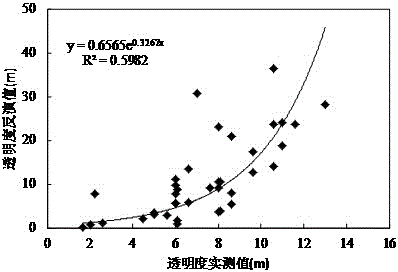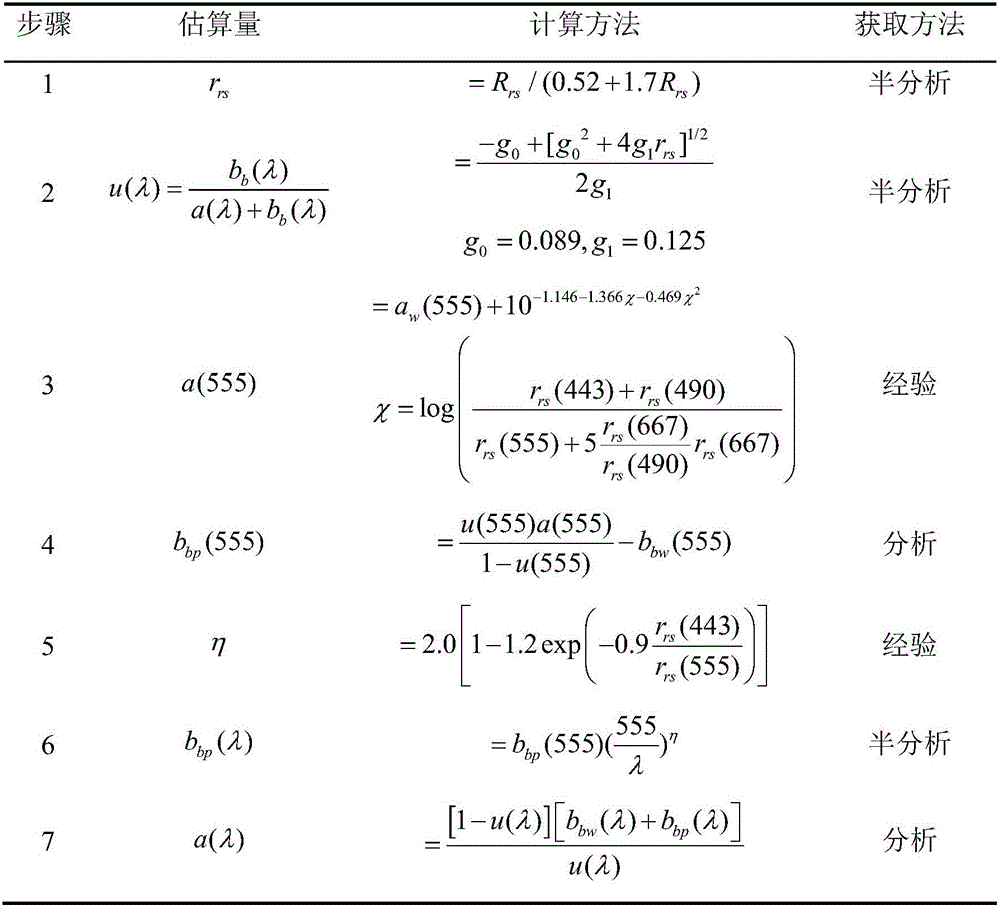Method for inversely analyzing transparency of water body by virtue of inherent optical parameter
A technology of water transparency and optical parameters, applied in the field of water color remote sensing, can solve the problems of lack of universality, achieve universal applicability and solve the problem of time and space constraints
- Summary
- Abstract
- Description
- Claims
- Application Information
AI Technical Summary
Problems solved by technology
Method used
Image
Examples
Embodiment Construction
[0016] The method for retrieving the transparency of water bodies using inherent optical parameters of the present invention will be further described in detail through examples below.
[0017] A method for retrieving the transparency of water bodies using inherent optical parameters, the specific implementation steps are as follows:
[0018] (1) Reading in measured transparency data and remote sensing reflectance data
[0019] The transparency data of 62 stations collected in May and June 2009 in the Yellow East China Sea and the MODIS-Aqua level 3 remote sensing albedo data in the same period were read in.
[0020] (2) Calculation of absorption and scattering coefficients by remote sensing reflectance
[0021] Studies by Doron et al. showed that K d (v)+c(v) and K d (490)+c(490) is highly correlated, and the relationship between the two can be fitted by a quadratic polynomial. The coefficient of determination of the model is as high as 0.99, as shown in the following form...
PUM
 Login to View More
Login to View More Abstract
Description
Claims
Application Information
 Login to View More
Login to View More - R&D
- Intellectual Property
- Life Sciences
- Materials
- Tech Scout
- Unparalleled Data Quality
- Higher Quality Content
- 60% Fewer Hallucinations
Browse by: Latest US Patents, China's latest patents, Technical Efficacy Thesaurus, Application Domain, Technology Topic, Popular Technical Reports.
© 2025 PatSnap. All rights reserved.Legal|Privacy policy|Modern Slavery Act Transparency Statement|Sitemap|About US| Contact US: help@patsnap.com



